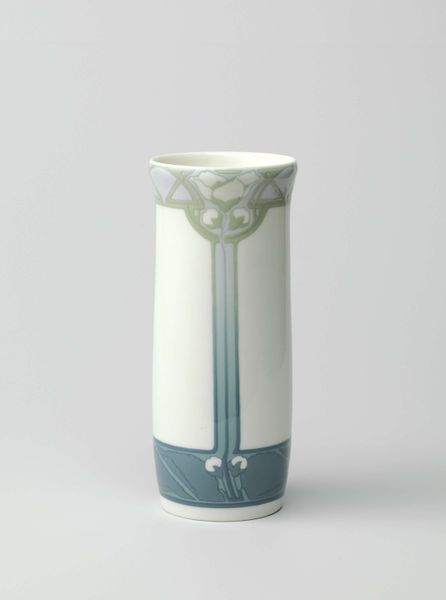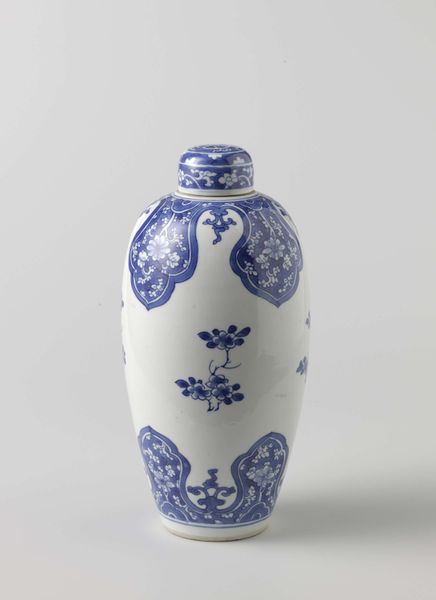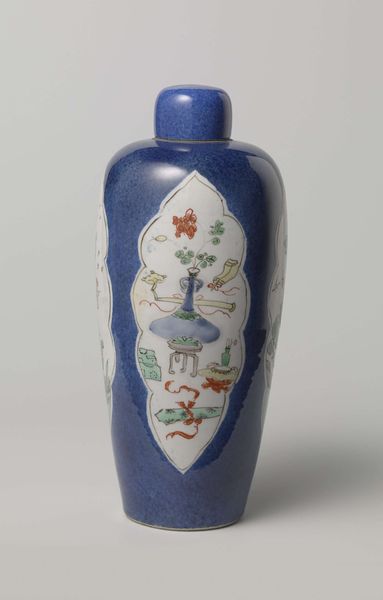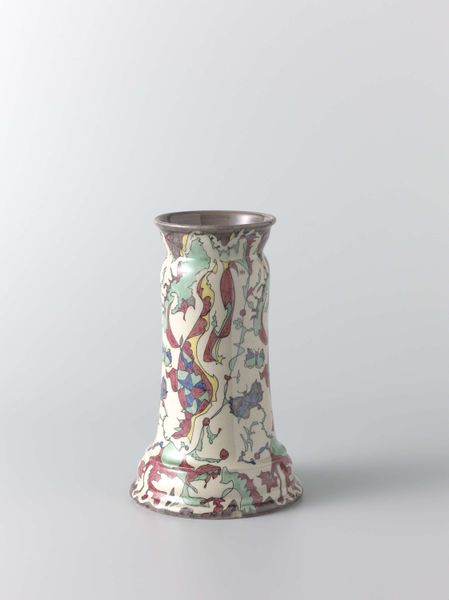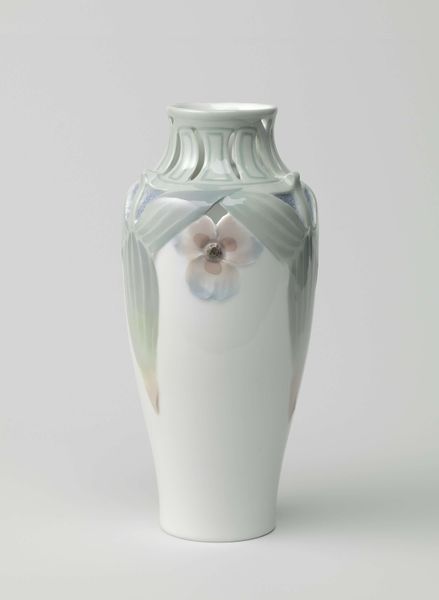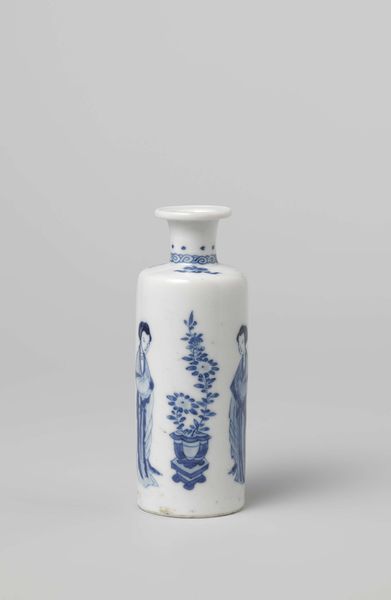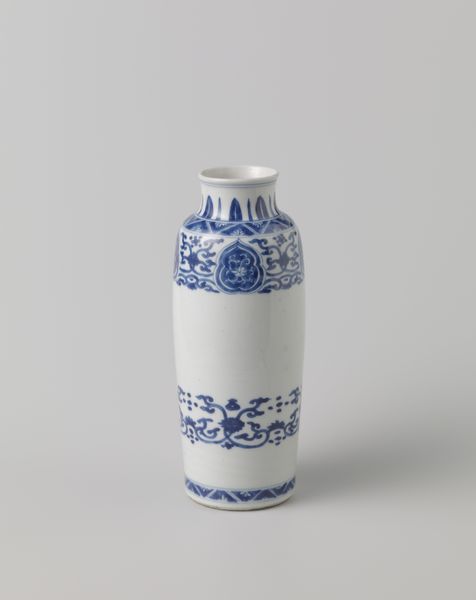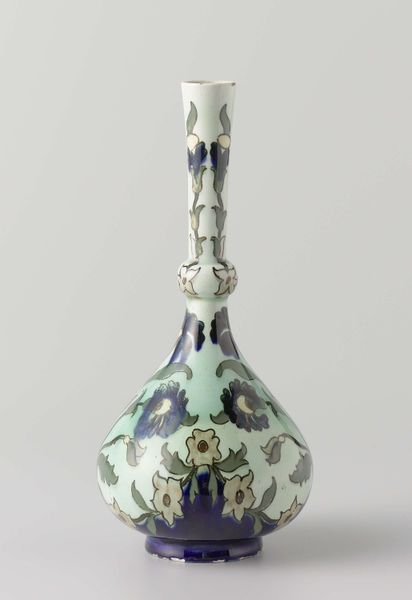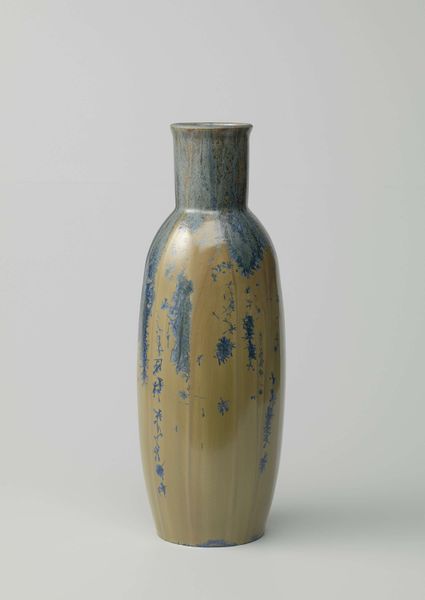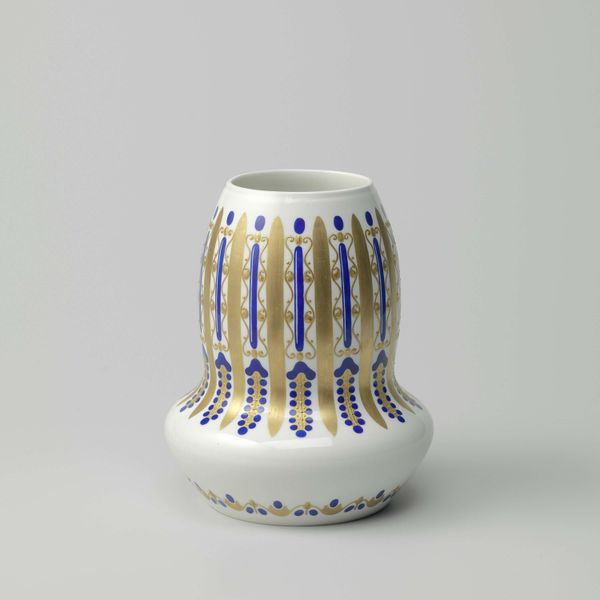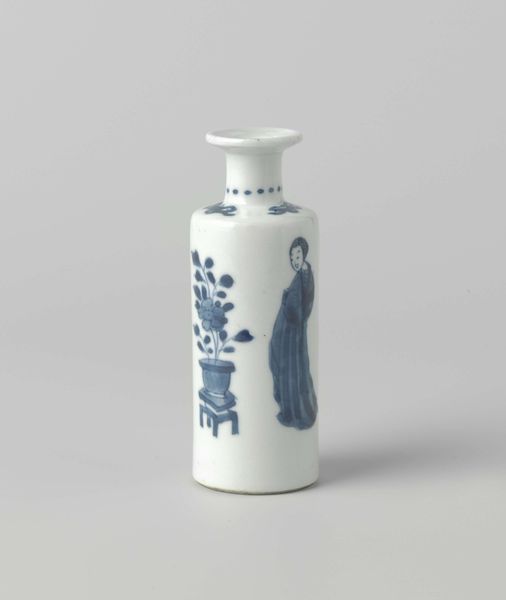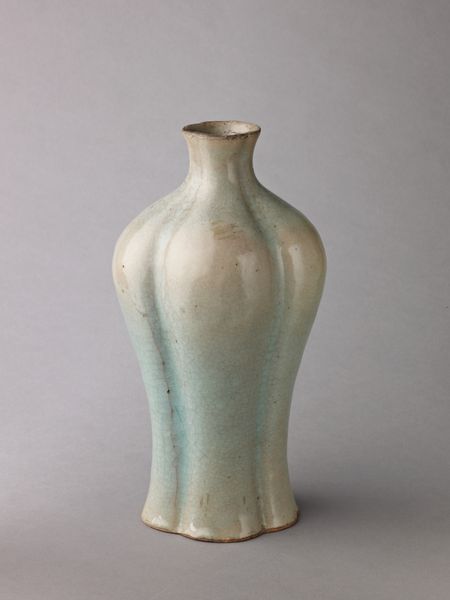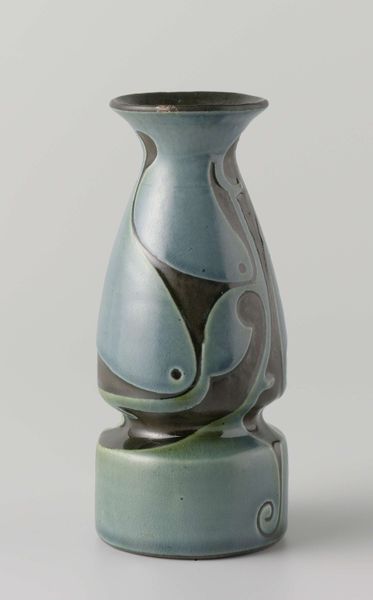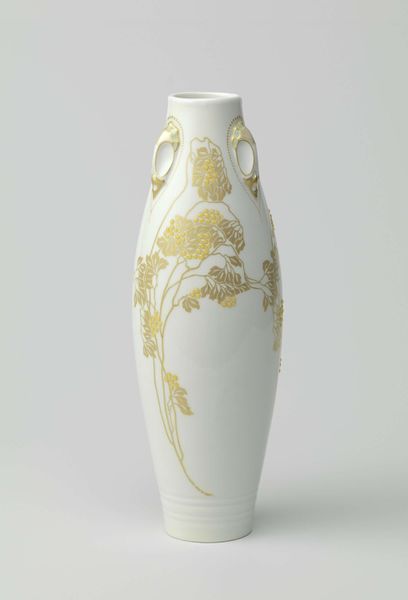
ceramic
#
organic
#
art-nouveau
#
ceramic
#
figuration
#
stoneware
#
ceramic
#
decorative-art
Dimensions: height 22.3 cm, diameter 10.6 cm
Copyright: Rijks Museum: Open Domain
Curator: I'm immediately drawn to the soft, almost dreamlike quality of this ceramic piece. There’s a stillness that emanates from its simple form and pale turquoise glaze. Editor: This vase, titled "Vaas beschilderd met twee naar elkaar toegewende kameleons"—or, Vase Painted with Two Chameleons Facing Each Other—was created by Johannes van der Vet sometime between 1903 and 1908. The stoneware construction really grounds the delicate Art Nouveau design. Curator: Grounded is a good word. The ceramic as material gives it a weight that subverts the almost ethereal feel. And I see how the Art Nouveau style lends itself to organic forms but also to the decorative arts generally. The production—hand-painted, I imagine—really defines it. Editor: Exactly. The making of it is very interesting. I see these opposing chameleons less as simply decorative and more as representing a polarized society at the turn of the century with rigid gender norms. The period saw great social shifts reflected through organic and natural motifs like these, especially highlighting societal pressure and shifting identities. Curator: Ah, I see them reflecting social anxieties, then. But I do wonder about the symbolism. The chameleons, perpetually adapting—do they represent societal hypocrisy, maybe even the fragility of performative identity? What about the limitations on materials that an artist such as Van der Vet might have had during production and creation? Editor: The limitations are relevant, indeed. He turned readily available clay into something deeply communicative. Considering the cultural milieu of the time and the broader narrative surrounding changing artistic approaches and increased accessibility, Van der Vet crafted this vase that acts as both a utilitarian object and a stark cultural mirror, critiquing art's place in early modern life. Curator: That definitely expands my appreciation of the work! The vase goes beyond its simple utility and decorative function, embodying and refracting broader social, political, and cultural currents. It prompts introspection about identity, societal structures, and the silent dialogues they share. Editor: Precisely! It also illuminates how art challenges elitist production to invite critical discussions. It’s fascinating to consider the hands that shaped and painted it.
Comments
No comments
Be the first to comment and join the conversation on the ultimate creative platform.
